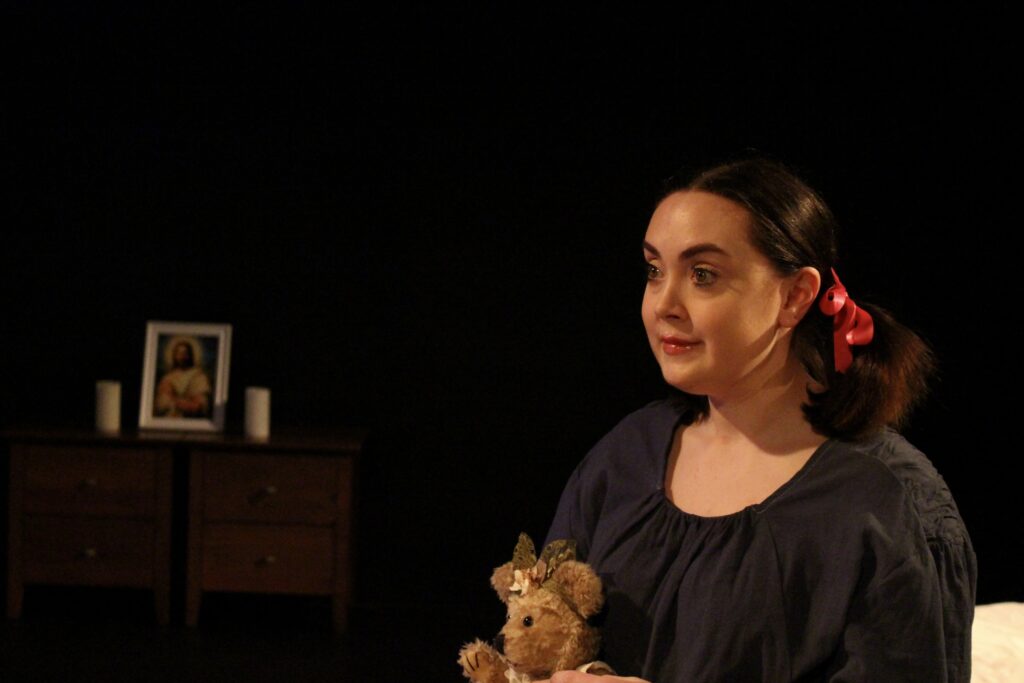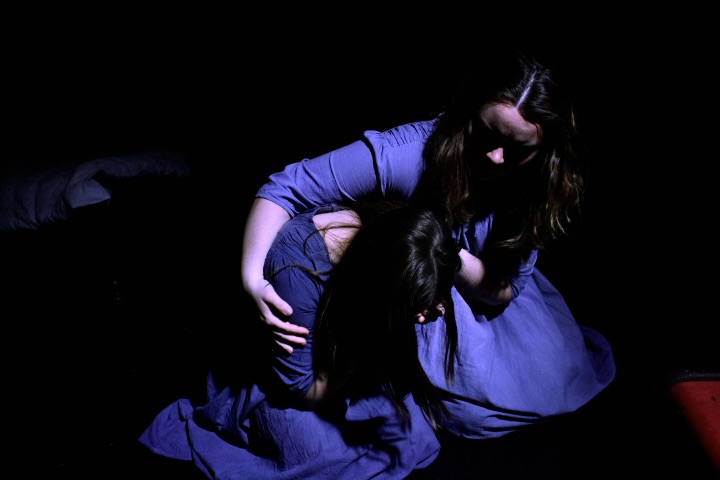What Every Girl Should Know Review
ATYP’s reviewing program was created to give young people a platform to voice their opinions and experiences while developing skills in critical reflection. The views expressed are those of the writer and do not reflect the views of ATYP or its staff.
Content warnings: This review will discuss a play that contains course language, discussion of sexual violence, content related to mental health and strong sexual themes.
 Katelin Divall in What Every Girl Should Know, 2024. Photo by Nicholas Pavan
Katelin Divall in What Every Girl Should Know, 2024. Photo by Nicholas Pavan
25.9.2024
Mass and masturbation. The cornerstone of What Every Girl Should Know. This 90-minute four-hander was brought to Sydney Fringe by director Nicholas Pavan and Cats in the Cupboard productions. In a Catholic Girls Reformatory in 1914 three girls Anne (Mia McMenamin), Lucy (Katelin Divall) and Theresa (Mikaela Corrigan) share a dorm (and a masturbation ritual). The arrival of new girl Joan (Alice Mahony) brings with her Margaret Sangers sex education column and a world of possibility.
While there were a lot of things I enjoyed about this work, I think the choice of material was…a sticking point. And unfortunately, that is where I need to begin.
This is a difficult piece to execute. Especially within the confines of Fringe. The writing is unforgiving. Although altogether very entertaining and pacey, the climax (pun intended) didn’t feel fully realised. Regardless, playwright Monica Byrne begins a really important conversation and I love a theatre company that picks work that says something important to them. This production company’s commitment to telling women’s stories is something I’ve long admired, and this is no different.
The play felt like a celebration of female friendship. The actors were connected and comfortable with one another bringing a sense of tongue-in-cheek fun. This gave some much-needed levity to what is extremely dense subject matter. The company of actors were like a tornado of energy in the space which is absolutely required, and commendable, to keep this beast of a show alive. As the play progressed, I felt this energy translated to an increase in volume, which made some of the storytelling a little one-note. However, McMenamin and Divall’s deep emotional access was specifically hard-hitting.
 Mikaela Corrigan & Mia Mcmenamin in What Every Girl Should Know, 2024. Photo by Nicholas Pavan
Mikaela Corrigan & Mia Mcmenamin in What Every Girl Should Know, 2024. Photo by Nicholas Pavan
Another stand out for me was the work of lighting designer Joseph Wasson. His creativity completely transformed the space. The use of practical lighting by way of lamps was stunning.
I really enjoy Flight Paths facilities and this was no exception. The space worked so well. It’s a relatively large black box theatre which created a sense of voyeurism for the audience. There was beautiful harmony between the space and set which did a lot with the limitations of a Fringe budget. I have never seen a reformatory and yet I am sure that this is what it would look like, almost exactly.
Other than the concession of a location change, Pavan’s version of the play was extremely literal. It took what was on the page and placed it on the stage. In that sense, I appreciate the way he honoured the writer’s work and built a world that was committed to Byrne’s vision. In saying that I would’ve been intrigued by a version of this play that wasn’t quite so literal. The play is set in 1914 but easily could’ve been eventuated at any time in history. To recontextualise this story and these lives for the modern day could’ve opened up more of a dialogue between the audience and performer.
On the other hand, maybe that is part of the horror of it all. That this play bears such a troubling resemblance to the world that we are living in now. Where institutional misuse of power perseveres and women are condemned for owning their sexuality. Every atrocity that existed then continues to kill our women today. In the harrowing words of Joan, “women are born dead”.
What Every Girl Should Know played from the 25th to the 28th of September at the Flight Path Theatre as part of Sydney Fringe Festival 2024.
— Caitlin Green

